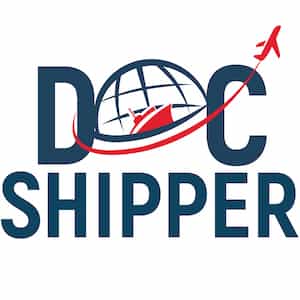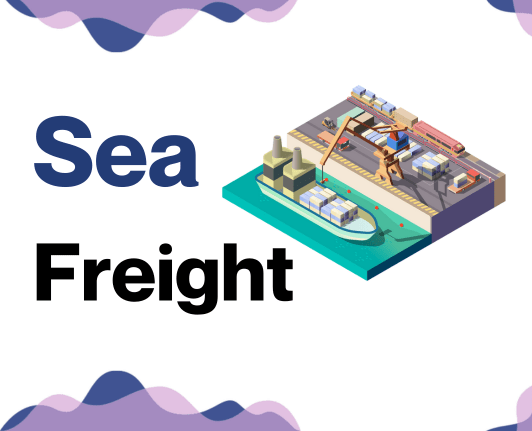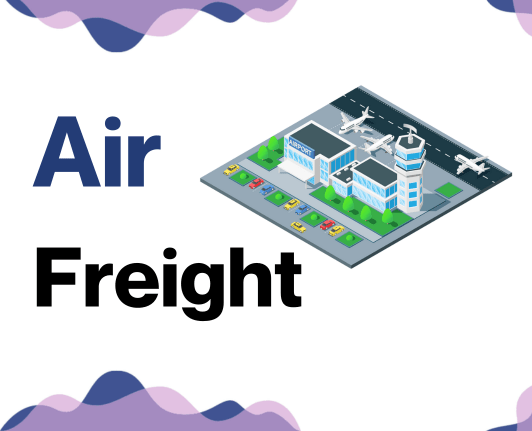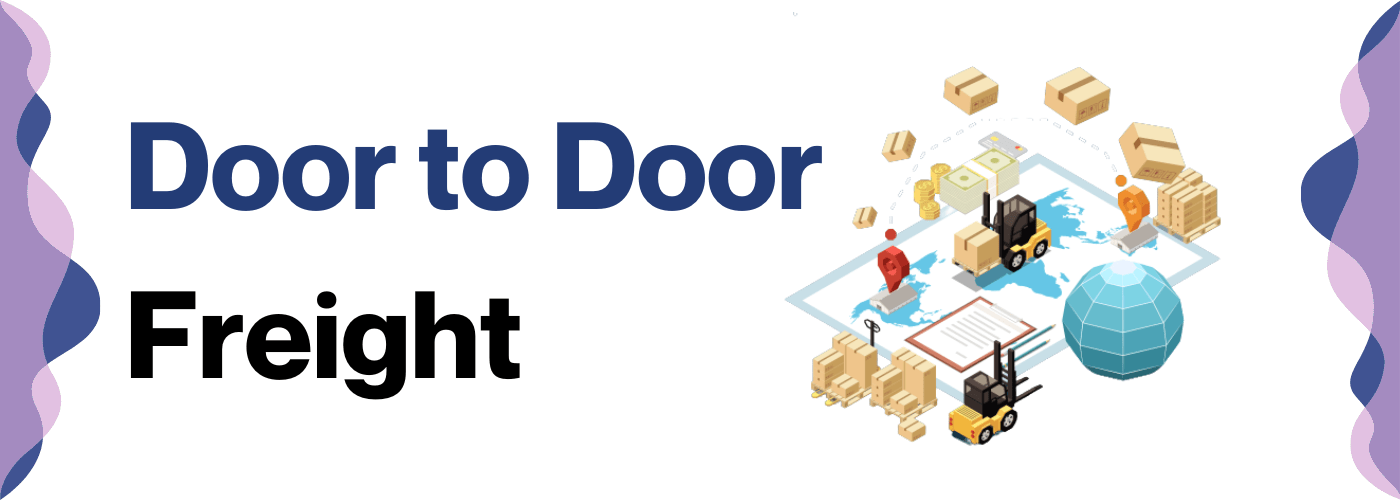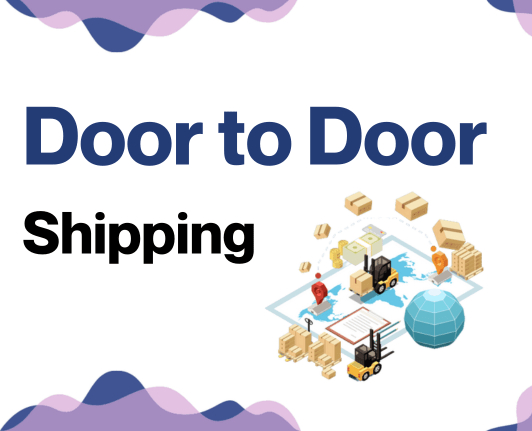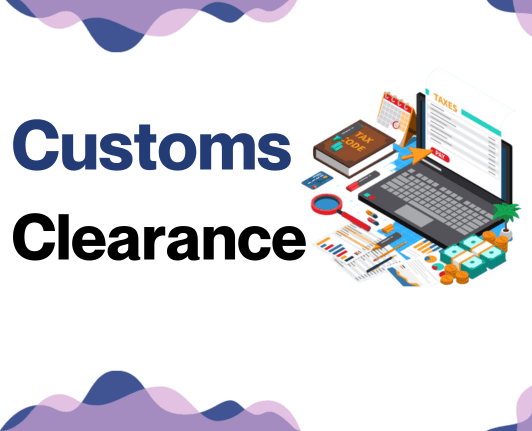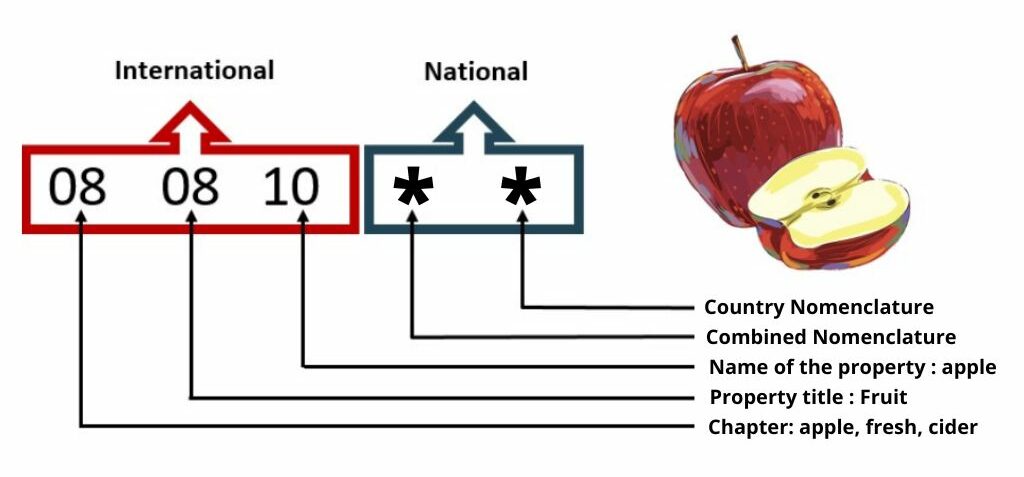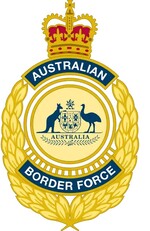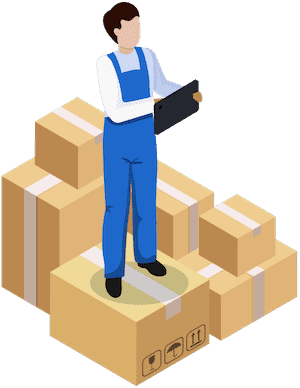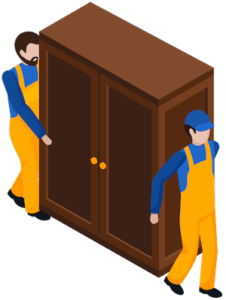They say it's a small world, but try telling that to a shipment of goods traveling from Malaysia to Australia! The complexities of decoding shipping rates, understanding transit times, and navigating the labyrinth of customs regulations can make international exports daunting for businesses. This destination guide contains everything you need to know about moving freight between these vibrant nations, covering different shipping methods from air, road, rail, and sea. We'll also guide you through shipping regulations, duties, taxes, as well as provide expertise on trade between Malaysia and Australia specifically tailored for businesses. If the process still feels overwhelming, let DocShipper handle it for you! We are an international freight forwarder that takes care of every step of the shipping process, turning these challenges into successful transactions for your business.
Table of Contents
Which are the different modes of transportation between Malaysia and Australia?
Finding the perfect transportation mode from Malaysia to Australia isn't rocket science. Picture this: Malaysia and Australia, like two friends living in different cities, separated by vast oceans. Airfreight comes as a speedy courier, making cross-ocean trips swift and easy. Yet, ocean freight is the sturdy worker, slower but carrying heavy loads at lower costs. The geographical distance makes road and rail routes impractical, so we're choosing between the sprinter and the marathon runner here. Picking the right one largely depends on your parcel's nature -- whether you value speed over cost or vice versa. Let's dive deeper to help you decide.
How can DocShipper help?
Planning to ship goods from Malaysia to Australia? We at DocShipper have your back! From paperwork to packaging, we handle all aspects of the process, streamlining your logistics. Why not hit the 'Easy Button' for your freight needs? Get your free estimate within 24 hours! Need more information? Our consultants are just a phone call away.
DocShipper Tip: Sea freight might be the best solution for you if:
- You're dealing with hefty quantities or oversized goods. Sea transport is your go-to for maximizing space without stretching your budget.
- Time sensitivity isn't a concern for your shipment. Ocean freight is known for its leisurely pace, especially when compared to the speed of air or rail.
- Your supply chain connects key international harbors. This positions you to take full advantage of a wide-reaching network of ocean trade routes.
Sea freight between Malaysia and Australia
Trade between Malaysia and Australia? It's robust. It travels those vast oceanic miles, with busy ports like Port Klang and Port of Melbourne forming vital links in the chain, connecting Kuala Lumpur to Sydney, Penang to Perth, and more. Can you picture high-volume goods cruising the sea route at an unhurried pace? That's ocean freight for you. Cost-effective yet time-consuming, it's the stately turtle of the shipping world.
But like any journey, it isn't always smooth sailing. Shippers tend to hit rough waters navigating the complexities of this passage. Missteps are made, deadlines missed, and money lost. Sea freight sounds simple, but it’s like assembling a 1,000-piece jigsaw puzzle. Specific practices and nuances need to be understood and observed to make the process less daunting. This part of our guide offers you a map to turn that mountainous 1,000-piece puzzle into simpler clusters. Stay tuned, and let's conquer these shipping challenges together.
Main shipping ports in Malaysia
Port Klang
Location and Volume: Located on the west coast of Peninsular Malaysia, this port is the busiest in the country, with a shipping volume of over 12.3 million TEU in 2020. It is an integral part of the Maritime Silk Road and plays a crucial role in the country's trade and economic activities.
Key Trading Partners and Strategic Importance: Port Klang primarily trades with China, Singapore, Indonesia, South Korea, and India. Its strategic importance lies in its comprehensive facilities and strategic location, making it a popular choice for shipping companies worldwide.
Context for Businesses: If you are considering expanding your business into the Asian market, Port Klang could be a potential cornerstone for your shipping needs, given its extensive network and efficient handling of cargo.
Port of Tanjung Pelepas
Location and Volume: Situated at the eastern end of the busy Strait of Malacca, this port is the second busiest in Malaysia and processed over 9.1 million TEUs in 2020.
Key Trading Partners and Strategic Importance: The port's prominent trading partners include China, the United States, and Singapore. It is also a strategic transshipment hub for major shipping lines such as Maersk Line.
Context for Businesses: For firms delivering goods to Southeast Asia, the Port of Tanjung Pelepas is an advantageous location due to its less congested waters and additional connectivity to key global shipping lanes.
Penang Port
Location and Volume: Located along the Northwest Coast of the Peninsular, its shipping volume was over 1.3 million TEU in 2020.
Key Trading Partners and Strategic Importance: Dealing predominantly with Southeast Asian countries, it notably serves as a key link in connecting the Bay of Bengal with the Andaman Sea.
Context for Businesses: Moving goods through Penang Port could be beneficial if you're planning to tap into trends in the emerging digital electronics market in Southeast Asia, as it houses the Peninsula’s largest electronics manufacturing hub.
Port of Bintulu
Location and Volume: This port, located in the heartland of the Malaysia-China Kuantan Industrial Park, has a shipping volume of over 200,000 TEU.
Key Trading Partners and Strategic Importance: Its key trading partners include China, Indonesia, and Japan. It's of strategic importance due to being the largest LNG production terminal in the world.
Context for Businesses: Energy businesses will find Bintulu of particular interest because of its proximity to the comprehensive energy industrial park surrounding it.
Port of Johor
Location and Volume: Located at the southern tip of the Peninsular, it has a shipping volume upwards of 425,000 TEU.
Key Trading Partners and Strategic Importance: Singapore is its most significant trading partner, enriched by the port's strategic position near to Singapore's busy shipping lanes.
Context for Businesses: Industry-specific services, such as shipbuilding and oil storage, make the Port of Johor fitting for businesses in corresponding sectors.
Kuantan Port
Location and Volume: Located on the east coast of Peninsular Malaysia, it has a shipping volume of approximately 500,000 TEU.
Key Trading Partners and Strategic Importance: Kuantan Port primarily trades with China, with rapidly increasing volumes due to Free Trade Agreements.
Context for Businesses: If your business is moving goods to and from China, you might consider incorporating Kuantan Port into your logistics strategy due to direct access to one of the world's largest economies.
Main shipping ports in Australia
Port of Sydney
Location and Volume: Situated at the heart of Sydney Harbour, the port contributes significantly to the city's economic prosperity, handling around 1.6 million TEU annually.
Key Trading Partners and Strategic Importance: Key trading partners include China, Japan, and South Korea, with containerized goods being its major import and export. The port plays a critical role in the supply chain of the Greater Sydney Region.
Context for Businesses: If you're planning to cater to the Asia-Pacific market, Port of Sydney can be your gateway due to its prime location and robust infrastructure.
Port of Melbourne
Location and Volume: Australia's busiest port, Port of Melbourne, is strategically located at the top of Port Philip Bay and handles over 3 million TEU annually.
Key Trading Partners and Strategic Importance: The port's main trading partners include China, the United States, and New Zealand. The port is an essential link, supporting various industries including automotive, agriculture, and manufacturing.
Context for Businesses: Port of Melbourne's substantial volume and diverse trade base position it as an influential player in your shipping strategy, enabling access to key markets.
Port of Brisbane
Location and Volume: Nestled on the eastern coastline and linked to major interstate road and rail networks, Port of Brisbane facilitates more than 1.2 million TEU per year.
Key Trading Partners and Strategic Importance: The port has strong trade relations with the Asia-Pacific region, North America, and Europe. It's an important component of Queensland's transport network and economy.
Context for Businesses: Looking to expand in the Pacific and beyond? The Port of Brisbane's strategic location and capacity could be instrumental to your expansion strategy.
Port Adelaide
Location and Volume: Located in the heart of industrial South Australia, Port Adelaide manages nearly 500,000 TEU per year.
Key Trading Partners and Strategic Importance: The port maintains healthy trade relations with countries like China, Asia, and Europe. It's strategically important for South Australia's steel and automotive industry.
Context for Businesses: With its industrial-centered location, Port Adelaide can serve as an effective hub for businesses involved in manufacturing sectors.
Port of Fremantle
Location and Volume: Located on the Western Australian coast, Port of Fremantle accommodates approximately 770,000 TEU per year.
Key Trading Partners and Strategic Importance: The port's major trading partners include China, Japan, and Singapore. It acts as a lifeline for western Australia's resources and agricultural sectors.
Context for Businesses: For businesses targeting the Asian and Australian west coast markets, Port of Fremantle is an attractive proposition due to its geographic proximity and trade reach.
Port of Darwin
Location and Volume: Situated at the top end of Australia, Port of Darwin sees lower TEU numbers but is strategically important for project and bulk exports.
Key Trading Partners and Strategic Importance: Major trading partners entail countries in Southeast Asia. The port plays a pivotal role in supporting Northern Australia's growth.
Context for Businesses: If your business relies on project or bulk exports, the functional capabilities and proximity to Asian markets make Port of Darwin a feasible logistics option.
Should I choose FCL or LCL when shipping between Malaysia and Australia?
When shipping goods between Malaysia and Australia, the choice between Full Container Load (FCL) and consolidation, or Less than Container Load (LCL), is crucial. It's similar to deciding whether to rent a whole bus for a group trip or to buy individual tickets. Choosing the right option affects your budget, timeline, and the success of your shipment. But, don't worry, it doesn't have to be puzzling. In this guide, we'll demystify these terms and help you choose the best option, perfectly suited to your shipping needs.
LCL: Less than Container Load
Definition: LCL, standing for Less than Container Load, refers to shipments that don't fill a whole container. Multiple LCL shipments are grouped into a single container by a freight forwarder.
When to Use: LCL shipping is a more economic and flexible option for businesses with low-volume shipments, particularly when the cargo is between 13 to 15 CBM (Cubic Meters).
Example: For instance, a startup trading company in Kuala Lumpur selling specialized machinery components to a client in Sydney, would benefit from LCL shipment. Their monthly shipment volume of about 10CBM wouldn't justify a full container, hence choosing LCL freight they can save transportation costs and only pay for the space their cargo occupies.
Cost Implications: The main advantage of LCL freight is reduced cost, as charges are based on the dimensional or volumetric weight of the cargo rather than a fixed container price. However, keep in mind that there may be additional costs due to the consolidation/deconsolidation process, which can affect the final LCL shipping quote.
FCL: Full Container Load
Definition: FCL, or Full Container Load, is a type of ocean freight where a shipper rents an entire container. This could be a 20'ft container or a 40'ft container, offering an isolated environment for your goods from door to door.
When to Use: If consistency, safety, and cost-savings are your priorities, and your cargo volume is more than 13/14/15 Cubic Meters (CBM), then FCL shipping is your best bet. The fact that the FCL container is sealed from origin to destination adds an extra security layer to your goods.
Example: Imagine you are a furniture exporter sending two dozen wooden wardrobes from Kuala Lumpur to Sydney. Due to the high-volume nature of your cargo, FCL would not only secure your wardrobes within an exclusive container but also save you money compared to choosing LCL.
Cost Implications: Although an FCL shipping quote generally has a higher upfront cost, the cost per unit decreases significantly with greater volume. Thus, making FCL a more economical choice for larger shipments. This is due to the fixed price of renting the entire container - which doesn't change based on how full it is. The only variable cost will be fees associated with customs and duties.
Unlock hassle-free shipping
Tricky decisions during international shipping draining your time and energy? Don't fret! At DocShipper, our mission is to ease cargo shipping for you. With our ocean freight experts, we consider factors like your cargo size, urgency, and shipping cost to help choose between consolidation or full container shipping from Malaysia to Australia. No guesswork, just customised solutions. Click here for your free estimation and experience an ocean freight journey as smooth as it gets. Don't hold back, your hassle-free shipping journey awaits!
How long does sea freight take between Malaysia and Australia?
Shipping goods by sea freight between Malaysia and Australia traditionally takes around 12 to 22 days on average. This timeframe is fairly flexible due to several factors such as the specific ports used, the weight and nature of the goods, as well as the shipping line's scheduling. For a precise and tailored quote, businesses are advised to contact a freight forwarder like DocShipper.
Below is a brief snapshot of expected transit times between key ports in both countries. Please note, these are only estimates and actual times might vary:
| Port in Malaysia | Port in Australia | Average Transit Time (days) |
| Port Klang | Port of Sydney | 28 |
| Tanjung Pelepas | Port of Melbourne | 19 |
| Johor Port | Port of Brisbane | 20 |
| Penang Port | Fremantle Port | 16 |
How much does it cost to ship a container between Malaysia and Australia?
Estimating the cost to ship a container between Malaysia and Australia is somewhat complex, with ocean freight rates being influenced by a medley of factors. The Point of Loading, Point of Destination, your chosen carrier, the nature of your goods, and monthly market fluctuations can mean shipping costs swing widely. These variations make it challenging to pinpoint a specific price per CBM. However, fear not! Our shipping specialists stand prepared to navigate these complexities. We'll work diligently with you, quoting on a case-by-case basis, to secure the most cost-effective and efficient solution for your unique shipping needs. Rest easy, knowing we're committed to providing you with optimal rates and unrivaled service.
Special transportation services
Out of Gauge (OOG) Container
Definition: An OOG container refers to any container that exceeds standard shipping dimension limits, known as 'Out of gauge cargo'. These containers are used for oversized or irregularly shaped goods that don't fit into standard containers.
Suitable for: Heavy machinery, industrial equipment, oversized goods, or other items that surpass the size limits of regular containers.
Examples: Construction machinery, large vehicles, or turbines can be shipped using OOG containers.
Why it might be the best choice for you: If your cargo doesn't adhere to standard container dimensions but still requires the protection and convenience a container offers, OOG container shipping can be a flexible and secure option.
Break Bulk
Definition: Break bulk refers to the transportation of goods that are not packaged, but are loaded, shipped, and unloaded individually, often on pallets or in crates.
Suitable for: Large equipment, steel products, heavy machinery, oversized items, and commodities.
Examples: Wood, machinery pieces, steel coils or large-scale generators may be transported as break bulk.
Why it might be the best choice for you: If your cargo is too large for traditional shipping methods but too small for chartering an entire vessel, break bulk can provide an efficient solution.
Dry Bulk
Definition: Dry bulk shipping involves the transportation of bulk commodities in loose form such as grains, coals, or minerals.
Suitable for: Granular materials and commodities that can be loaded directly onto a ship.
Examples: Coal, iron ore, and grains like wheat and rice often are shipped as dry bulk.
Why it might be the best choice for you: If you're shipping large quantities of unpackaged commodities between Malaysia and Australia, dry bulk could be a cost-effective and practical solution.
Roll-on/Roll-off (Ro-Ro)
Definition: Ro-Ro shipment refers to the method involving a ro-ro vessel, whereby cargo items that can roll – cars, tractors, trailers, or other wheeled machinery – are rolled on and off the ship.
Suitable for: Motor vehicles, trailers, tractors, boats and other wheeled machinery.
Examples: Agricultural or construction machinery, buses or SUVs are regularly transported using Ro-Ro.
Why it might be the best choice for you: If your cargo has wheels, Ro-Ro allows for efficient loading and unloading, keeping your shipping costs lower and preserving your goods’ condition.
Reefer Containers
Definition: Refrigerated containers or 'Reefer Containers' are used to transport temperature-sensitive cargo. They allow precise temperature control, ensuring the safe transportation of perishable goods.
Suitable for: Perishable products such as fruits, vegetables, dairy products, and pharmaceuticals.
Examples: Australian beef shipped to Malaysia or exotic fruits transferred from Malaysia to Australia would be handled in reefer containers.
Why it might be the best choice for you: If your cargo is perishable or temperature-sensitive, reefer containers maintain the perfect environment for your goods during their sea journey.
Shipping real-world goods involves a lot of practical details. DocShipper understands the quirks of every industry and can offer a tailored shipping solution for your needs. Need to discuss your Malaysia to Australia shipping requirements? Contact DocShipper for your free shipping quote in less than 24h.
DocShipper Tip: Air freight might be the best solution for you if:
- You're pressed for time or facing a non-negotiable deadline. Air freight delivers unparalleled speed when it comes to transit times.
- Your shipment is modest in size, falling under 2 CBM. Air freight is particularly well-suited for these smaller consignments.
- Your supply chain includes destinations that are off the beaten maritime or rail paths. Air freight gives you access to a comprehensive global airport network.
Air freight between Malaysia and Australia
Air freight from Malaysia to Australia is your speedy route to deliver small, high-value goods. Picture this: sending microchips - fragile, precious, and light. Speed and reliability are crucial, and here's where air freight shines. But it's not all smooth sailing. Shippers often stumble by not considering several factors before opting for air freight. It's like using baking soda instead of baking powder in your favorite recipe - it spoils the result.
A common mistake? Misjudging the weight of their shipment - akin to guessing the weight of a mystery item inside a gift box. Incorrect weight calculations can unnecessarily inflate costs. But don't worry, we're here to guide you through these challenges, ensuring that your shipping journey is just like a well-coordinated orchestra - music to your ears.
Air Cargo vs Express Air Freight: How should I ship?
Sky-bound with your shipment from Malaysia to Australia and unsure of your best flight option? Let's break it down: air cargo operates on passenger airlines where your goods share space with luggage, while express air freight dashes your items down under on a dedicated plane for quick turnaround. This guide's got you covered on making the best choice for your business, balancing speed, cost, and volume. Buckle up, let's unpack the ins and outs of both options and find your ideal sky route!
Should I choose Air Cargo between Malaysia and Australia?
In exploring freight options between Malaysia and Australia, air cargo stands out for cost-effectiveness and reliability. This suiylts businesses shipping 110/150 kg (220/330 lbs) or more. Major players include Malaysia Airlines, delivering consistent service, and Qantas Freight from Australia, renowned for frequent schedules. However, anticipate slightly longer transit times due to fixed flight schedules. Considering the balance between cost and speed, air cargo offers a highly viable solution tailored to your budgetary needs.
Should I choose Express Air Freight between Malaysia and Australia?
When moving goods between Malaysia and Australia, Express Air Freight can be a fast and efficient choice, especially for smaller shipments under 1 Cubic Meter (CBM) or weighing around 100-150 KG (220-330 lbs). This method employs dedicated cargo planes with no passengers, focusing solely on shipping goods promptly. For reliable Express Air Freight services, established providers such as FedEx, UPS, and DHL are worth considering. Outsourcing your freight needs to these specialists can streamline your transit, ensure speed, and provide tracking capabilities, making it an ideal option if you require quick delivery and frequent updates.
Main international airports in Malaysia
Kuala Lumpur International Airport
Cargo Volume: With an annual cargo handling capacity of 1,200,000 tonnes, Kuala Lumpur International Airport is renowned as one of the busiest cargo airports in the world.
Key Trading Partners: Its significant trading partners include China, Singapore, Japan, and Australia, indicating a diverse and global reach.
Strategic Importance: Being the primary airport in Malaysia, it serves as a vital gateway to Southeast Asia. Its proximity to major Asian trade routes makes it a critical node in global supply chains.
Notable Features: It hosts a dedicated cargo village known as Advanced Cargo Centre and boasts advanced logistics and cargo handling facilities.
For Your Business: If your business requires efficient air freight services with a focus on Asia Pacific connections, Kuala Lumpur International Airport could be your ideal transit point.
Sultan Abdul Aziz Shah Airport
Cargo Volume: Standing as Malaysia's second-busiest airport, it handles a substantial volume of 800,000 tonnes of cargo annually.
Key Trading Partners: Key trading partners include Indonesia, India, Thailand, and the United Arab Emirates, testifying to its robust connections with both intra-Asia and Middle Eastern markets.
Strategic Importance: Located within proximity of industrial and commercial hubs of Subang, Shah Alam, and Petaling Jaya, its strategic location makes it especially conducive for cargo operations.
Notable Features: The airport houses extensive warehousing facilities and customs services, facilitating efficient handling of cargo.
For Your Business: If your company is involved in critical or time-sensitive shipments across Asia, Sultan Abdul Aziz Shah Airport’s central location and facilities might be ideally suited to your needs.
Penang International Airport
Cargo Volume: This key transport hub handles over 360,000 tonnes of cargo annually.
Key Trading Partners: Extensive trading partners include China, Japan, Indonesia, and Singapore, providing substantial reach into East Asia and the Pacific.
Strategic Importance: As the third largest airport in Malaysia, it plays a pivotal role in the trade of Northern Malaysia and caters to the demands of the fast-growing industrial sector.
Notable Features: Its cargo complex, equipped with state-of-the-art facilities, includes a Free Commercial Zone that promotes ease of doing business.
For Your Business: If your business is focused on expansion in Northern Malaysia or trading with East Asian markets, Penang International Airport offers a strategically well-placed and seamless shipping experience.
Sarawak's Kuching International Airport
Cargo Volume: Their cargo capacity is lower at around 26,000 tonnes per year but still plays a crucial role in East Malaysia.
Key Trading Partners: Key trading partners include Brunei, Singapore, and Indonesia, primarily servicing markets in Borneo and surrounding regions.
Strategic Importance: Its critical role extends to being the gateway of Borneo and supports businesses trading in the region.
Notable Features: Known for its efficient handling of perishable goods and agri-based products.
For Your Business: If your business involves frequent shipping of agricultural goods or trade with Borneo, Kuching International Airport is a vital link facilitating your business strategies.
Johor Bahru’s Senai International Airport
Cargo Volume: Handling up to 100,000 tonnes of cargo per year, Senai International is a smaller but still significant airport in Malaysia.
Key Trading Partners: Main trading partners are China, Brunei, and Taiwan, fostering a diverse scope of trade across various Asian markets.
Strategic Importance: Its location in the fast-developing Southern Peninsular Malaysia positions it favorably to support the burgeoning industries in the region.
Notable Features: It encompasses a Free Zone and offers comprehensive logistics and warehouse services, setting the groundwork for efficient freight transport.
For Your Business: For businesses looking to capitalize on the growth potential of Southern Malaysia or trading with East Asian nations, Senai International Airport offers a plethora of advantages to streamline logistics and transport.
Main international airports in Australia
Sydney Kingsford Smith International Airport
Cargo Volume: Sydney airport handled over 471,900 tonnes of international and domestic freight in 2019.
Key Trading Partners: China, Japan, USA, and New Zealand.
Strategic Importance: As Australia's busiest airport, it serves as the primary gateway for international shipping to the country. It is also vital in ensuring the efficient movement of goods across the country.
Notable Features: Sydney Airport hosts a broad range of airlines and has dedicated air freight facilities and widespread road links.
For Your Business: Choosing Sydney as a port of entry means access to a busy logistics hub with efficient delivery times to several major domestic and international destinations.
Melbourne International Airport
Cargo Volume: Melbourne Airport handled over 400,000 tons of international cargo during the last fiscal year.
Key Trading Partners: China, New Zealand, USA, and Hong Kong.
Strategic Importance: Melbourne Airport provides businesses with an alternative to the busy Sydney International Airport while maintaining strong trade links.
Notable Features: The airport hosts a number of airlines flying to Asia, North America, and Europe and has a dedicated freighter apron.
For Your Business: Melbourne airport's strong trade links and diverse array of airlines make it a flexible and reliable choice for shipping needs.
Brisbane International Airport
Cargo Volume: Brisbane international airport handled 165,000 tons of cargo in the last fiscal year.
Key Trading Partners: USA, China, New Zealand, and Japan.
Strategic Importance: It serves as a key trade conduit for the state of Queensland, aiding businesses across the region.
Notable Features: Brisbane's dedicated Freight Terminal, equipped with state-of-the-art handling facilities, ensures efficient processing of imports and exports.
For Your Business: If your business involves regional trade within Queensland, Brisbane International Airport can fill the gap with its capable facilities and less congested cargo terminals.
Perth International Airport
Cargo Volume: Last fiscal year, Perth International Airport handled about 78,000 tons of international airfreight.
Key Trading Partners: Singapore, UAE, Malaysia, and Hong Kong.
Strategic Importance: Being geographically closer to Asian countries, Perth Airport provides efficient links to several major Asian economies.
Notable Features: Perth Airport is equipped with a regularly upgraded and equipped cargo village that secures efficient handling of goods.
For Your Business: If your business involves trade with Asian countries, choosing Perth as a hub can bring you faster transit times, reduced costs, and secure processes.
Adelaide International Airport
Cargo Volume: In 2020, Adelaide airport handled approximately 60,000 tons of airfreight.
Key Trading Partners: Hong Kong, China, Singapore, and the USA.
Strategic Importance: The airport is a key gateway for goods especially agricultural commodities going to Asia and the Middle East.
Notable Features: The airport hosts regular services to several Asian destinations known for ecommerce, making it a key player in Australian online retail.
For Your Business: If your business involves exporting agricultural goods or ecommerce, selecting Adelaide International as a freight hub can provide definitely advantageous routes.
How long does air freight take between Malaysia and Australia?
Air freight transit between Malaysia and Australia takes about 3 to 5 days on average. Remember, this is an estimate and actual shipping time can vary based on factors like the specific airports in question, the weight of the shipment, and the nature of the goods being transported. To get a precise idea of transit times, you're best advised to consult a freight forwarder such as DocShipper.
How much does it cost to ship a parcel between Malaysia and Australia with air freight?
Shipping air freight parcels between Malaysia and Australia typically costs between $5-$10 per kg. But remember, these figures are estimated and the actual cost may differ. Factors such as distance from departure and arrival airports, parcel dimensions, weight, and nature of goods can considerably alter the final shipping expense. At our firm, we believe in bespoke pricing — customised to cater to your unique shipping needs. Therefore, we recommend contacting our team for an exact quote, reflecting your specific requirements. Contact us and receive a free quote in less than 24 hours.
What is the difference between volumetric and gross weight?
When shipping goods, you'll come across two key terms - gross weight and volumetric weight. Gross weight is the actual weight of your shipment, including goods, packaging, pallets, and any other handling units. Volumetric or dimensional weight, on the other hand, is a weight estimate based on the volume that your shipment takes up.
For air cargo, the volumetric weight is calculated using the following formula: Length (in cm) x Width (in cm) x Height (in cm) / 6000. If you're dealing with express air freight, the divisor changes to 5000. Let's consider a hypothetical shipment with dimensions 50cm x 50cm x 50cm and a gross weight of 30kg. By using the air cargo formula, we get a volumetric weight of 20.83 kg which is 45.86 lbs. For express air freight, the volumetric weight would be 25kg or 55.12 lbs.
So why does this matter? Freight carriers charge for shipping based on the greater of the two weights - gross or volumetric. Let's say, your shipment's gross weight is 30 kg but its volumetric weight is 25 kg (using the Express Air Freight calculation), you’ll be charged based on the 30 kg weight. This prevents undercharging for large, light items and ensures carriers maximize their cargo space. So, understanding weight calculations is a practical part of determining your shipping costs.
DocShipper tip: Door to Door might be the best solution for you if:
- You value convenience and want a seamless shipping process, as door-to-door takes care of every step from pickup to delivery.
- You prefer a single point of contact, as door-to-door services typically provide a dedicated agent to handle all aspects of the shipment.
- You want to minimize the handling of your goods, reducing the risk of damage or loss, as door-to-door minimizes transitions between different modes of transport.
Door to door between Malaysia and Australia
Door to door shipping is a comprehensive delivery solution providing end-to-end transport from Malaysia to Australia. Imagine your goods seamlessly traveling from the factory in Kuala Lumpur right to a storefront in Sydney, thanks to less handling and speedy customs clearance. Sounds promising, doesn't it? Now let's dive in and explore why door to door might just be your golden ticket.
Overview – Door to Door
Embarking on the shipping voyage from Malaysia to Australia is quite the task, isn't it? The intricate web of customs can be a white-knuckle nightmare! And this is exactly where Door to Door shipping comes to your rescue. It's the stress-free cornerstone of DocShipper services, loved by many clients for streamlining the whole saga, from pick-up to drop-off. Though it might be a pricier option, you'll be trading pennies for peace of mind, sidestepping many logistical landmines. How's that for smooth sailing? But, of course, every pearl has its shell – it's not the quickest route compared to express options. Nonetheless, the advantages often outweigh any pitfalls.
Why should I use a Door to Door service between Malaysia and Australia?
Moving goods from Malaysia to Australia? Here's a cheeky tip: ditch the logistics headache and hop on the door-to-door service bandwagon. Here are five compelling reasons to consider:
1. Stress-Free Logistics: Door-to-door service takes the entire logistics process off your plate. From picking up your goods to delivering them at the destined location, everything is managed by the service provider - no more coordinating with multiple parties to ensure timely transportation.
2. Timely Delivery for Urgent Shipments: In business, time is indeed money. The door-to-door system leverages efficient routes and schedules to ensure your goods reach their destination as rapidly and reliably as possible, which is perfect for time-sensitive shipments.
3. Specialized Care for Complex Cargo: Have delicate or intricate goods to transport? Rest easy. The door-to-door service entails specialized handling tailored to your cargo's unique features, ensuring it receives the utmost care from start to finish.
4. Complete Shipping Convenience: Imagine waving goodbye to your goods in Malaysia and reuniting with them in Australia without lifting a finger in-between. That's the convenience door-to-door service brings! It goes beyond shipping; the service includes loading, trucking, customs clearance, and delivery, making it the ultimate one-stop solution for your shipping needs.
5. Reliable Full Journey Tracking: Your goods aren’t playing hide and seek! With door-to-door service, you get a tracking system providing real-time updates of your shipment’s progress, creating peace of mind knowing your goods are accounted for throughout their journey.
So, for a more simplified, efficient, and smart international shipping experience, consider sailing the door-to-door route. It could be the game-changer your business has been waiting for.
DocShipper – Door to Door specialist between Malaysia and Australia
Embark on a seamless shipping journey with DocShipper. We offer comprehensive door-to-door services from Malaysia to Australia, ensuring a hassle-free experience. Our expert team handles everything from packing to transport, customs clearance and all shipping methods. Rest assured, you'll have your dedicated Account Executive ensuring smooth processes. So why wait? Get a free estimate within 24 hours or engage with our friendly consultants today. We're here to simplify your shipping procedures.
Customs clearance in Australia for goods imported from Malaysia
Navigating the maze of customs clearance in Australia, specifically for goods coming from Malaysia, can be filled with unexpected twists and turns. These include confronting surprise fees and navigating intricate duties, taxes, quotas, and licenses. Without a firm grasp of these realities, your cargo risks getting stuck in a logistical limbo. The upcoming sections will walk you through all the necessary details and save you from potential pitfalls. At DocShipper, we're geared up to guide you through every step of this complex process for any type of goods worldwide. To kickstart your project and get a cost estimate, simply reach out to our team providing your goods' origin, value and HS Code. We're eager to help propel your business forward!
How to calculate duties & taxes when importing from Malaysia to Australia?
When importing products from Malaysia to Australia, understanding how to calculate the customs duties and taxes is vital. There are several factors to take into account, from the country of origin and the harmonized system code (HS Code) to the customs value of your shipment. It's also important to note the applicable tariff rate and be aware of any additional fees or taxes related to your specific products. Your journey to duty & tax estimation starts with identifying the origin country, in this case, that would be Malaysia - the country where your goods have been produced or manufactured. This will play an integral role in determining how much you should set aside for this part of the importation process.
Step 1 - Identify the Country of Origin
Identifying the country of origin—the first crucial step. Why? We've pinned down five compelling reasons.
First off, it's crucial for accurate duty calculations. Customs use it to determine the tax you should pay. Secondly, it impacts which trade laws apply. Thirdly, recognizing the origin helps identify potential import restrictions, allowing you to plan. Fourth, it plays a role in preferential duty rates—if a Free Trade Agreement (FTA) applies, you could save substantially. Lastly, it influences logistical considerations, affecting how you plan your transit.
Speaking of FTAs, you're in luck with Malaysia. As a part of the Association of Southeast Asian Nations (ASEAN), your imports may get preferential duties under the ASEAN-Australia-New Zealand FTA. Precise goods categories benefit, so it's worth checking.
Now, import restrictions. You must abide by Australia's import conditions—failing that, your shipment won't clear customs. So, stay in the loop with the Australian Government's Department of Agriculture, Water, and the Environment.
Remember: Identify your goods' origin, explore trade agreements, understand restrictions, and save time, money, and headaches in your Malaysia-Australia journey. Your successful import begins with knowing where your goods were born.
Step 2 - Find the HS Code of your product
The Harmonized System (HS) Code is a global standard for classifying traded products. Every commodity that enters or crosses international borders must be assigned this code, ensuring that it aligns with international customs and tariff systems. The HS Code is critical in the calculation of customs duties and taxes, streamlining trade negotiations and agreements, and facilitating international freight logistics.
Normally, a supplier or manufacturer of the goods will be able to provide the HS Code as they're usually well-versed in export and import regulations. However, you may need to determine the HS code yourself in some cases.
Luckily, there's an easy way to find it through the Harmonized Tariff Schedule. Follow these simple steps:
1. Visit the 'Harmonized Tariff Schedule' link
2. Type the name of your product in the search bar.
3. Under the 'Heading/Subheading' column, you'll find the HS code of your product.
Please note, accuracy when determining the HS Code is crucial. A wrong code can lead to delays in shipping, inaccurate calculation of duty and taxation, and worst-case scenario, fines.
Here's an infographic showing you how to read an HS code.
Step 3 - Calculate the Customs Value
Understanding the customs value of goods imported from Malaysia to Australia can seem complex. Simply put, it's crucial to differentiate customs value from product value. So, if you bought a product for $500, but with international shipping costs of $50 and insurance costs of $30, your customs value isn't $500. Instead, it's the sum of all three values - the CIF value. In this case, it's $580. Think of it as the total cost that gets your product across borders and into the market safely. You'll need to declare this CIF value while making customs declarations in Australia. It's not as intimidating as it appears, and accurate calculations can save your business from undue stress and unexpected fees down the line.
Step 4 - Figure out the applicable Import Tariff
Let's delve into the world of import tariffs! An import tariff, in essence, is a tax placed on goods shipped from one country to another. This is often done to protect a country's industries from competition abroad. In Australia, there are two main types of tariffs, namely Most Favoured Nation (MFN) and Preferential tariffs. The MFN tariff is the default tariff rate while the Preferential tariff is exclusively granted to some countries under free trade agreements.
Finding the appropriate import tariff from Malaysia to Australia is a straightforward process. You begin by visiting the Australian Customs Tariff Schedule portal. From here, you find the HS code section, determined in earlier steps, and find the corresponding tariff rate.
Now, let's illustrate this with your product, a bicycle, which has an HS code of 8712. You import the bicycle from Malaysia with a cost, insurance, and freight (CIF) value of $150 USD. Based on the Tariff Schedule of Australia, you find that the given product has an import tariff rate of 5%.
By applying the formula to calculate import duties, which is (CIF value x tariff rate), your import duty comes out to be $7.50 USD (($150 5)/100)). Thus, gaining a clear understanding of import tariffs could save your business a considerable amount of money in the long run.
Step 5 - Consider other Import Duties and Taxes
Once your shipment has crossed the border and you've sorted the standard tariff, don't forget the additional import duties and taxes. These can vary based on the origin country and the product's specific nature. For instance, you might encounter something called excise duty, imposed on certain goods like alcohol and tobacco.
Next, you could run into anti-dumping taxes - these are applied to items that could potentially harm Australia's domestic industry by undercutting the market. For example, let's say you're importing bicycles from Malaysia. If your home-grown bicycle market is struggling, a higher rate may be levied on them to protect local business.
Most importantly, you'll need to factor in the Value Added Tax (VAT). In Australia, it's called Goods and Services Tax (GST) and it stands at 10% (please note this is only an illustrative number and could be subject to changes).
So, if your shipment is valued at $10,000, with GST, you’ll pay an extra $1,000. The equation is simple: Shipment Value ($) x GST Rate (%) = GST owed ($).
Remember, these are just examples, and actual costs may vary. Always check the current rates and legislation to avoid unexpected expenses. As you can see, importing isn't just about getting your product from point A to B, it's also about understanding the financial terrain. It's an extra overhead, yes, but with the right planning and knowledge, you can turn it into just another day at the office!
Step 6 - Calculate the Customs Duties
Calculating customs duties might seem complex, yet this step is crucial for your success when importing goods from Malaysia to Australia. To determine your customs duties, you'll use the formula: Customs Value (CV) x Customs Duty Rate (CDR) = Customs Duty (CD).
Consider these examples for clarity.
In scenario one: If your CV is $10,000 with a CDR of 5%, your CD (10,000 x 0.05) equals $500. Your total cost would be $10,500 (CD + CV).
Scenario two involves Value-Added Tax (VAT). Add the customs duty to the customs value for a new total value ($10,500), then apply Australia's VAT rate of 10%. Your VAT amount is $1,050, making your total cost $11,550 (CV + CD + VAT).
Scenario three includes anti-dumping taxes and Excise Duty in addition to VAT and customs duties. Assume an anti-dumping tax of 5% ($525) and Excise Duty of 5% ($525) is applied to your total cost ($11,550), your final cost ends up at $12,600.
Does this sound like a lot to handle on your own? With DocShipper’s customs clearance services, we take care of all these calculations for you. We ensure you're not overcharged while handling your customs clearance procedures anywhere in the world. Reach out for a no-obligation, free quote within 24 hours.
Does DocShipper charge customs fees?
Confused about customs fees? Here's the scoop: DocShipper, as a licensed customs broker in Malaysia and Australia, handles customs clearance for you, and yes, there's a small fee for this service. However, any customs duties or taxes are separate and go directly to the government. But don't worry - we provide you with official customs documents validating that you're only paying what's rightfully owed. Makes sense? It's like paying a mechanic to fix your car, but the cost of the spare parts is additional and separate.
Contact Details for Customs Authorities
Malaysia Customs
Official name: Royal Malaysian Customs Department
Official website: http://www.customs.gov.my/
Required documents for customs clearance
Understanding the maze of customs paperwork can be a challenge. Let's dive into the crucial documents you'll need: Bill of Lading, Packing List, Certificate of Origin, and Documents of Conformity (CE standard). They're your keys to a smooth customs clearance process.
Bill of Lading
The Bill of Lading (BoL) is indispensable when shipping goods from Malaysia to Australia. It's like a receipt—a snapshot of your transaction, indicating ownership transfer from the seller to the buyer. This document safeguards your rights, whether you're sending electronic components or machinery. Expect two types: a physical BoL and one for air cargo, known as the Air Waybill (AWB). Embrace the e-BoL or 'telex' release, a digital lifesaver during tight deadlines, crushing the waiting game for paper documents. Its electronic nature means faster delivery, less paperwork, and regret-free logistics management. Remember, securing your BoL equips you with the power to sail, or fly, through the customs clearance process smoothly. It's not just a document; it’s your ticket to a stress-free shipping journey.
Packing List
Shipping goods from Malaysia to Australia? It all starts with an accurate Packing List. It tells what's inside each package from DVDs to doorknobs. An accurate list is not just useful but a major requirement for both air and sea freight. Your consignment could be a 20-foot container or a single box, the requirement stays the same. Say you're shipping timber furniture, the packing list helps authorities identify possible quarantine risks. Remember, each mistake could mean delays in customs at Sydney Harbour or Melbourne Airport leading to undesirable expenses. So, your mantra? Accuracy, always!
Commercial Invoice
A commercial invoice is equally your proof and promise, detailing what you're shipping from Malaysia to Australia. It's a must-have for breezy customs clearance, so accuracy is non-negotiable. This invoice should include details of the buyer and seller, the goods description, Harmonized System (HS) code, and the invoice total value – all in English, to avoid translation snags. Think of it as your shipment's storyteller, paving the path through customs. For instance, if you're dispatching electronics, specifics like model name, brand, quantity can’t be overlooked. When crafting your invoice, ensure it matches the information on your Bill of Lading or Air Waybill. Any mismatch can lead to delays at customs. Remember, a meticulously prepared invoice reflects your business professionalism and makes your consignment's journey smoother. Happy shipping!
Certificate of Origin
When shipping from Malaysia to Australia, don’t overlook the power of the Certificate of Origin (CO). This document certifies the ‘birthplace’ of your goods, thereby unlocking potential benefits. Imagine getting preferential duty rates, thanks to a Free Trade Agreement between the two countries, just by mentioning that your rubber gloves are proudly Malaysian-made! For products like electronics with parts sourcing from multiple locations, remember to list the country where the final significant manufacturing took place. For instance, if those trendy smartwatches were assembled in Malaysia, irrespective of where the components came from, the CO should cite Malaysia as the country of manufacture. Simplifying the customs clearance, the CO can be your ticket to a hassle-free, cost-effective transit!
Get Started with DocShipper
Navigating the customs maze can be daunting, but with DocShipper, it doesn't have to be. Leveraging our expertise, we effortlessly manage all customs clearance intricacies between Malaysia and Australia. Wave goodbye to paperwork headaches and unexpected duties. Ready to ship smarter and faster? Contact us now for a commitment-free quote, delivered to your inbox in less than 24 hours.
Prohibited and Restricted items when importing into Australia
Managing your shipment to Australia? It's crucial you understand some items are off-limits or require special permission. Make sure your goods won't get stuck at customs, leading to delays and unexpected costs. Let's help you avoid that headache.
Restricted Products
- Medical devices: You need to get approval from the Therapeutic Goods Administration.
- Fertilizers: You have to grab a registration from the Australian Pesticides and Veterinary Medicines Authority.
- Radio equipment: Here, your best bet is to obtain a license from the Australian Communications and Media Authority.
- Cars and motorbikes: You need an import approval from the Department of Infrastructure, Transport, Regional Development, and Communications in Australia.
- Fresh foods including meat and dairy: Don't forget to obtain a permit from the Department of Agriculture, Water and the Environment.
- Pesticides or insecticides: Much like fertilizers, you'll need to snag a registration from the Australian Pesticides and Veterinary Medicines Authority.
- Precious metals and stones: Your friend here will be the Foreign Investment Review Board.
- Tobacco products: Fair warning here, you have to satisfy the regulations of the Australian Border Force.
- Weapons, including firearms: You'll require a permit from the Australian Border Force.
Prohibited products
- Live plants and bulbs
- Certain types of seeds
- Fresh fruits, vegetables, and certain foodstuffs
- Animals, including pets, livestock, and exotic animals
- Endangered animal products, such as ivory or coral
- Hazardous materials, including certain chemicals
- Firearms and other weaponry without a permit
- Military equipment or technology
- Certain types of equipment using refrigerant gas
- Products containing Asbestos
- Certain types of biological materials
- Narcotics
- Counterfeit items or pirated goods
- Goods bearing offensive imagery or messages.
Please note, this is not an exhaustive list, and regulations can change frequently. It's important to always verify the latest customs information before shipping goods to Australia.
Are there any trade agreements between Malaysia and Australia
Yes, there is a Free Trade Agreement (FTA) known as the Malaysia-Australia Free Trade Agreement (MAFTA) that may benefit your business shipping operations. This FTA, in effect since 2013, eliminates and reduces tariffs on various goods, potentially lowering your shipping costs. Additionally, there's ongoing collaboration between the two nations to enhance connectivity, opening up future opportunities. Keep tabs on such developments as they could influence your freight forwarding routes, procedures, and costs.
Malaysia - Australia trade and economic relationship
Over the years, Malaysia and Australia have established a robust and mutually beneficial economic relationship. These ties date back over half a century and As of 2024, the economic relationship between Malaysia and Australia continues to thrive. Bilateral trade in goods and services reached AUD 25 billion, reflecting the growing partnership. Australian investment in Malaysia surpassed AUD 6 billion, while Malaysian investment in Australia grew to approximately AUD 22 billion. These updates demonstrate the deepening economic ties underpinned by the Malaysia-Australia Free Trade Agreement (MAFTA), particularly in key sectors like manufacturing, healthcare, education, and financial services
Your Next Step with DocShipper
Amidst the intricate customs rules and multiple shipping methods, trusting your freight to an expert can be a lifesaver. DocShipper is your ideal partner for seamless shipping between Malaysia and Australia. Say goodbye to logistics headaches. Our team is ready to take charge of your process, ensuring timely and hassle-free delivery. Contact us now! Let's simplify your shipment.
Additional logistics services
Dive into our all-in-one supply chain solutions! From warehousing to distribution, we've got you covered, ensuring smooth sails for your goods even beyond shipping and customs clearance.
Warehousing and storage
Finding the right warehouse can feel like finding a needle in a haystack. Conditions like temperature control matter more if you're shipping temperature-sensitive goods like chocolate from Malaysia to Australia. Use a dependable solution to prevent your cargo from melting en-route! That's where we step in with our reliable warehousing services. Want to explore more? You'll find everything you need on our dedicated page: Warehousing.
Packaging and repackaging
To ship goods from Malaysia to Australia, apt packaging and repackaging is vital. Done poorly, it can cause costly damage. Top-notch agents can handle everything from wrapping fragile items to boxing bulky equipment - think delicate glass ornaments to hefty machinery. A reliable repackaging service adapts to your product's needs, guarding against damaging climates and rough handling. More info on our dedicated page: Freight Packaging
Cargo insurance
Just like you wouldn't leave your house unprotected against fire, you can't afford to send your goods half-way across the world uninsured. Our Cargo Insurance offers you that safety net, covering everything from loss, damage to other mishaps. Picture this: a sudden storm disrupts your sea freight; but breathe easy knowing our insurance has you covered. Prevention is definitely better - and cheaper - than the cure here. More info on our dedicated page: Cargo Insurance.
Supplier Management (Sourcing)
Looking for a reliable supplier in Asia or East Europe? DocShipper's got your back. With our Supplier Management services, we turn sourcing struggles into success stories. We find top-notch suppliers, tiptoe past language barriers and steamroll through the procurement process. Just ask our happy clients who've seen their production soar! Delve deeper into our sourcing secrets here.
Personal effects shipping
Moving to Australia from Malaysia and anxious about your precious belongings? With our Personal Effects Shipping, you can rest easy. We handle your priceless antiques and awkwardly-sized mountain bike with utmost care and ensure they are safely transported. Picture a stress-free move where your grandmother's heirloom vase arrives intact. Sound too good to be true? Discover more on our dedicated page: Shipping Personal Belongings.
Quality Control
Crafting bespoke goods for Aussie markets from Malaysia? Your masterpiece deserves a diligent inspection for quality control. Mistakes happen – but with checks in process, we catch blunders, like incorrect stitching on textiles or mismatched electronic components. Keep your brand reputation spick and span. Avoid costly recalls by ensuring your products are top-tier from the get-go. Underscore compliance, sidestep hassles. Imagine shipping 5000 authentic Batik sarongs only to discover a colour bleed! Check out more on our dedicated page: Quality Inspection for a best-case scenario.
Product compliance services
Ensuring your goods adhere to international standards is critical, or you risk shipment delays and hefty fines. Our Product Compliance Services help you seamlessly cross these often-ignored barriers. We conduct thorough laboratory testing, offering the necessary certification. So, let's make sure your products meet all regulations and smoothly reach their destination, saving you from unwanted surprises. More info on our dedicated page: Product compliance services. Stay informed, stay compliant!
FAQ | Freight Forwarder in Malaysia and Australia
What is the necessary paperwork during shipping between Malaysia and Australia?
When shipping goods from Malaysia to Australia, the necessary paperwork primarily includes a bill of lading for sea freight or an air waybill for air freight, a commercial invoice, and a packing list. At DocShipper, we generally take care of the freight documentation on your behalf for your convenience. It’s crucial for you to provide us with the commercial invoice and packing list. Depending on the nature of your goods, additional documents such as Material Safety Data Sheets (MSDS) or certain certifications may also be required, so it's always wise to be prepared.
Do I need a customs broker while importing in Australia?
In Australia, navigating the complexities of customs authority is no trivial task, which is why we highly recommend using a customs broker. There's a complex maze of processes, mandatory documents, and detailed submissions that must be navigated. At DocShipper, we pride ourselves on taking the hassle out of this task for you. We represent your cargo at customs during the majority of shipments, ensuring smooth operations and peace of mind for you. Trust us with your cargo and experience a worry-free shipping process.
Can air freight be cheaper than sea freight between Malaysia and Australia?
We understand it's hard to decide between air and sea freight. To give a clear picture, various factors play a role here, such as the route, weight, and volume of your cargo. Typically, when your goods are less than 1.5 cubic meters or weigh less than 300 kg (660 lbs), air freight from Malaysia to Australia could be a more competitive option. As a team at DocShipper, we prioritize providing you the best solution. Your dedicated account executive ensures to offer the most cost-effective and suitable transport mode for your specific needs. It's all about maximizing efficiency while minimizing cost.
Do I need to pay insurance while importing my goods to Australia?
While insurance isn't a requirement for importing goods to Australia, we at DocShipper highly recommend it. The unpredictability of shipping makes your goods susceptible to unwanted incidents such as damage, loss, or theft. Having insurance provides an extra layer of protection and peace of mind as it can cover these unexpected costs. Be wise and consider safeguarding your shipment with insurance coverage.
What is the cheapest way to ship to Australia from Malaysia?
Navigating the sea might be your most affordable option. We often recommend ocean freight for shipping from Malaysia to Australia owing to their relative geographical closeness and extensive trade routes. Not only is it usually cheaper than air freight, but it's also more eco-friendly. Still, remember that delivery times are longer, so you should plan your shipment accordingly. Customs duties and taxes may apply upon arrival in Australia, so factor these into your final cost.
EXW, FOB, or CIF?
Choosing between EXW, FOB, or CIF terms largely depends on your relationship with your supplier. Bear in mind, your supplier may not be a logistics expert, so leveraging an agent like us, DocShipper, will be beneficial, at least for managing the international freight and destination processes. Many suppliers generally sell under EXW terms (directly from their factory) or FOB (including all local charges till the originating terminal). But you needn't worry, because we have you covered. At DocShipper, we offer comprehensive door-to-door service, irrespective of the trade terms you choose, making the entire shipping process hassle-free for you.
Goods have arrived at my port in Australia, how do I get them delivered to the final destination?
If your goods have reached an Australian port under CIF/CFR incoterms, you'll need to hire a customs broker or freight forwarder for clearance, import payment, and final delivery. Alternatively, we at DocShipper offer DAP incoterms, where we manage the entire process for you. Please consult your account executive for clarification and to confirm these details.
Does your quotation include all cost?
Rest assured, at DocShipper, the quotation we offer includes all costs, except for duties and taxes at your destination. Our goal is to keep the process transparent, leaving no room for hidden fees or unpleasant surprises. We highly recommend consulting your dedicated account executive to estimate those additional costs for smooth operations.
